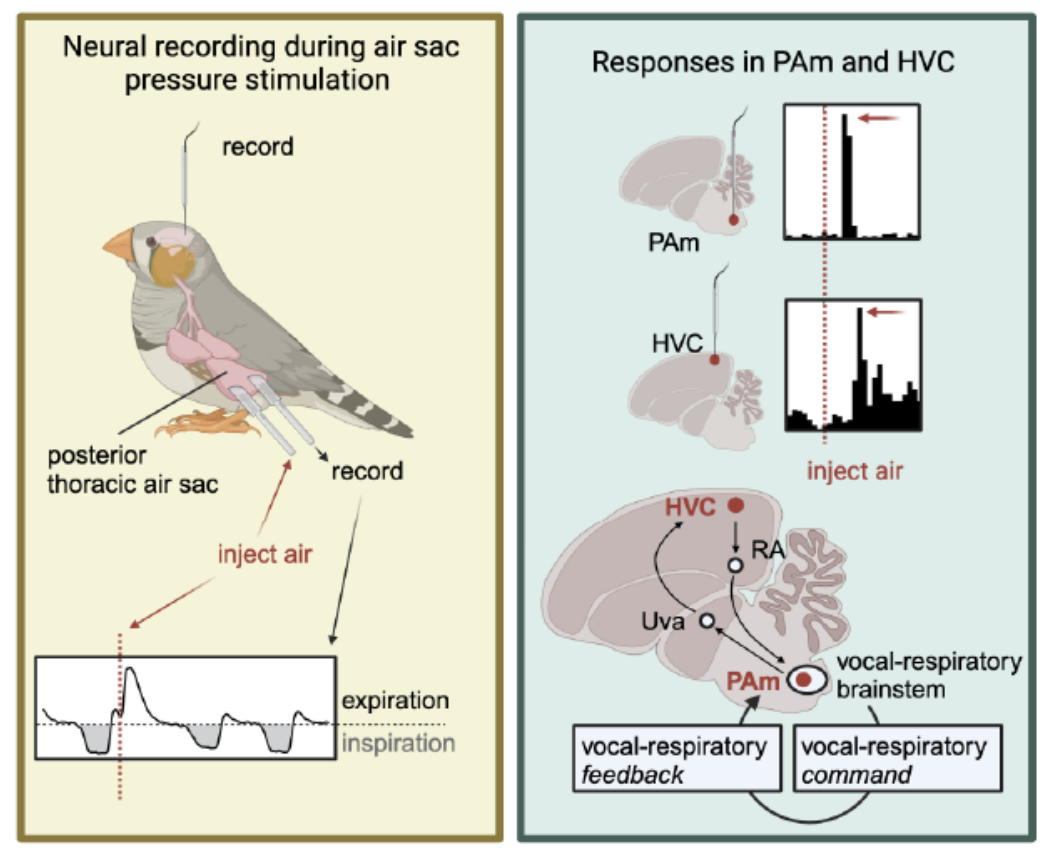New paper just dropped! This was the first project I worked on at Penn as a grad student and my deepest dive into neuroscience thus far. After pivoting towards computer vision and behavior, Jessie Burke (now at Columbia), took over the final, very technical experiments and wrote the paper to get it to publication. It’s a cool project, and I am really happy to have been a part of it (though in total honesty, I was happy to move on to less crunchy neuro projects).
The motivation was to understand how animals are able to maintain their actions consistent over time. Songbirds are a nice system for this, since their evolutionary success depends on singing a good song, whether they’re healthy and well rested, or they’ve just flown for miles or they feel sick. We know a lot the acoustic inputs in songbirds, but bodies are constantly changing, how do birds produce the proper output on the first try? We were hunting down the pathway for how viscerosensory information (e.g., feeling the pressure in the lungs) makes it’s way back up to the brain in order to modulate the signals that go out to the muscles. We found small disruptions in internal pressure make their way up to brainstem regions that connect to the regions required for song.
